Taiwan’s McDonald’s 2.0 Moving Fast-Food Upmarket
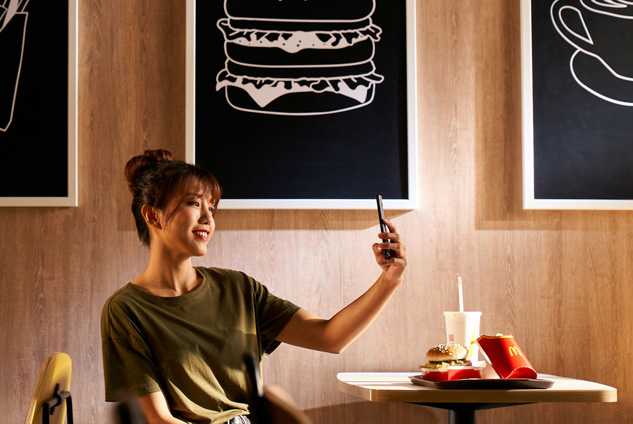
Source:McDonalds
With wooden interior decor, brand-new chic uniforms, signature meals and hospitality ambassadors serving you at the table, McDonald’s, once known for fast and accurate table turnover rates, is clearly different. As revenue growth in the fast-food restaurant sector slowed last year, McDonald’s Taiwan registered nine-percent growth. What’s the secret behind the hamburger chain’s success?
Views
Taiwan’s McDonald’s 2.0 Moving Fast-Food Upmarket
By Yi-chih WangFrom CommonWealth Magazine (vol. 703 )
“How can this be a McDonald’s? This looks more like a hotel or a classy restaurant,” exclaims a young woman as she takes a photograph at the McDonald’s outlet on Linsen North Road in Taipei to post on social media.
The bright red and yellow colors of the hamburger chain’s trademark are nowhere to be seen. Instead, warm wood colors and earthy tones dominate. Graphic art pieces featuring McDonald’s signature fare such as French fries and hamburgers adorn tiled walls, adding a designer’s touch.
Gone are the long order counters with long queues in front of them. There are only three checkout counters and self-order kiosks. After paying for their order, customers put a yellow sign on their table and wait to be served by the chain’s “hospitality ambassadors”.
The facelift of “McDonald’s 2.0 Restaurant” is the masterpiece of Hubert Lee, chairman of McDonald’s Taiwan and the former president of the Ambassador Hotels Group. Lee belongs to the third generation of the Hsu family, which controls the Yeangder Group.
The Ambassador Hotel Model
In 2017, Lee bought a 20-year franchise for McDonald’s Taiwan for NT$5.11 billion from the hamburger chain’s U.S. parent. Lee, who studied in the United States, was on a quest for the ultimate hamburger. This became apparent when he presented the signature series half a year after taking over. With a NT$129 price tag, the deluxe hamburger with truffles, mushrooms and Angus beef cost almost as much as two Big Macs.
During the past five years, fast food industry growth has slowed down worldwide. But McDonald’s, the first foreign fast food chain to enter Taiwan and with more than 400 outlets today the largest, bucked the trend, posting 9-percent revenue growth, according to an informed source.
McDonald’s Taiwan has never publicized results. Based on the number of outlets and average transaction value, industry peers estimate that the hamburger chain posted revenue of nearly NT$25 billion last year. This would be almost five times as much as rival Mos Burger, the second-largest fast-food chain in Taiwan.
Taiwan’s fast food market is saturated, and growth has stagnated. How did McDonald’s Taiwan overcome these limitations to grow again? Crucial was Lee’s decision to move the fast food chain upmarket and elevate the consumer experience, drawing on his 20 years of experience running the Ambassador hotels. The facelift included the menu and the interior design. An informed source says that revenue at the revamped 98 McDonald’s 2.0 Restaurants is 6 percent higher than at the average McDonald’s outlet.
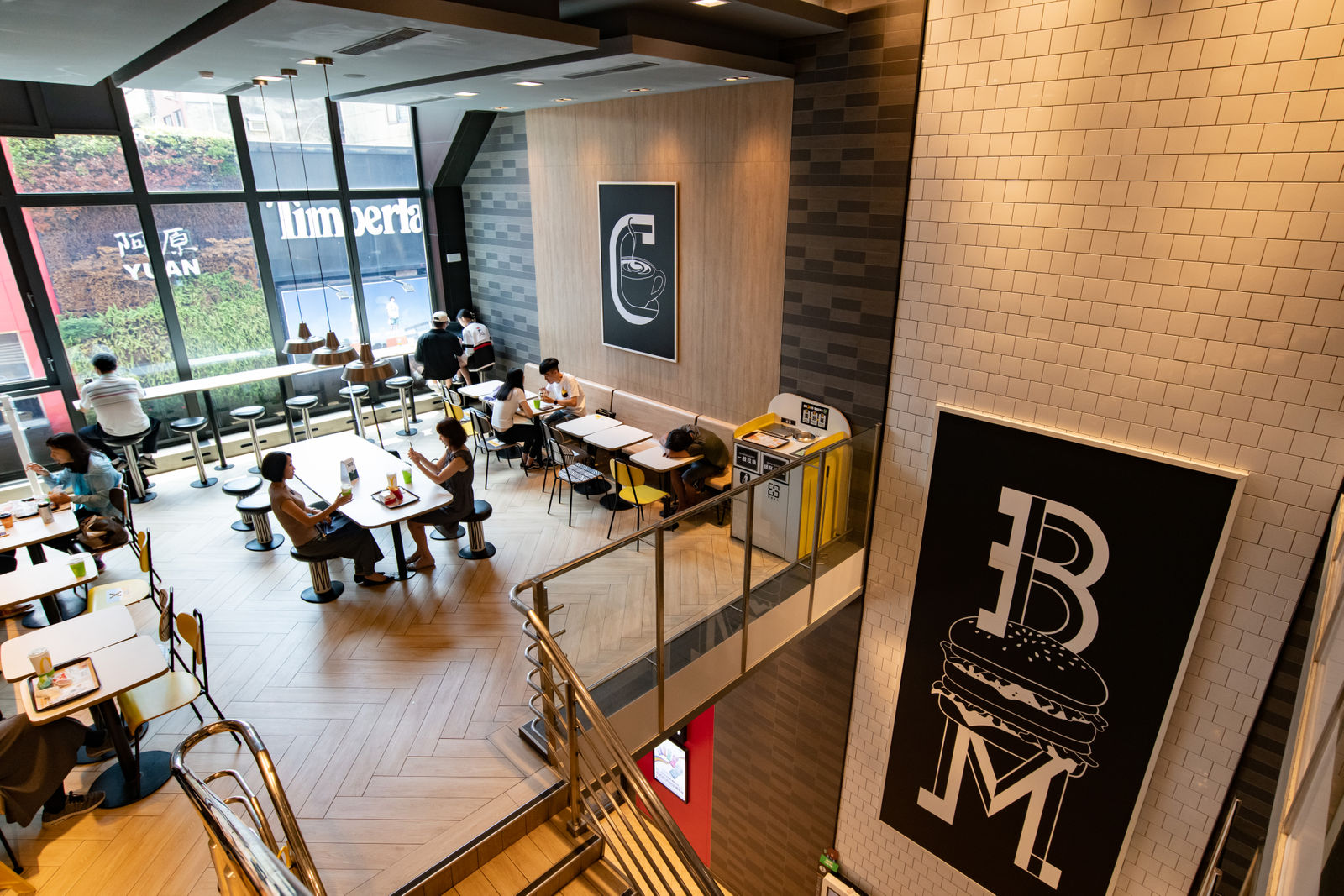 (Source: Ming-Tang Huang)
(Source: Ming-Tang Huang)
Burger Lover Acquires Hamburger Chain
The 55-year-old Lee is a grandson of Yeangder Group founder Hsu Chin-de and the younger brother of Emmet Hsu, the group’s chairman. The Yeangder Group owns Shihlin Electric and Engineering Corp., HCT Logistics, the Ambassador Hotels Group, Shihlin Development and the Hsinchu Golf Country Club .
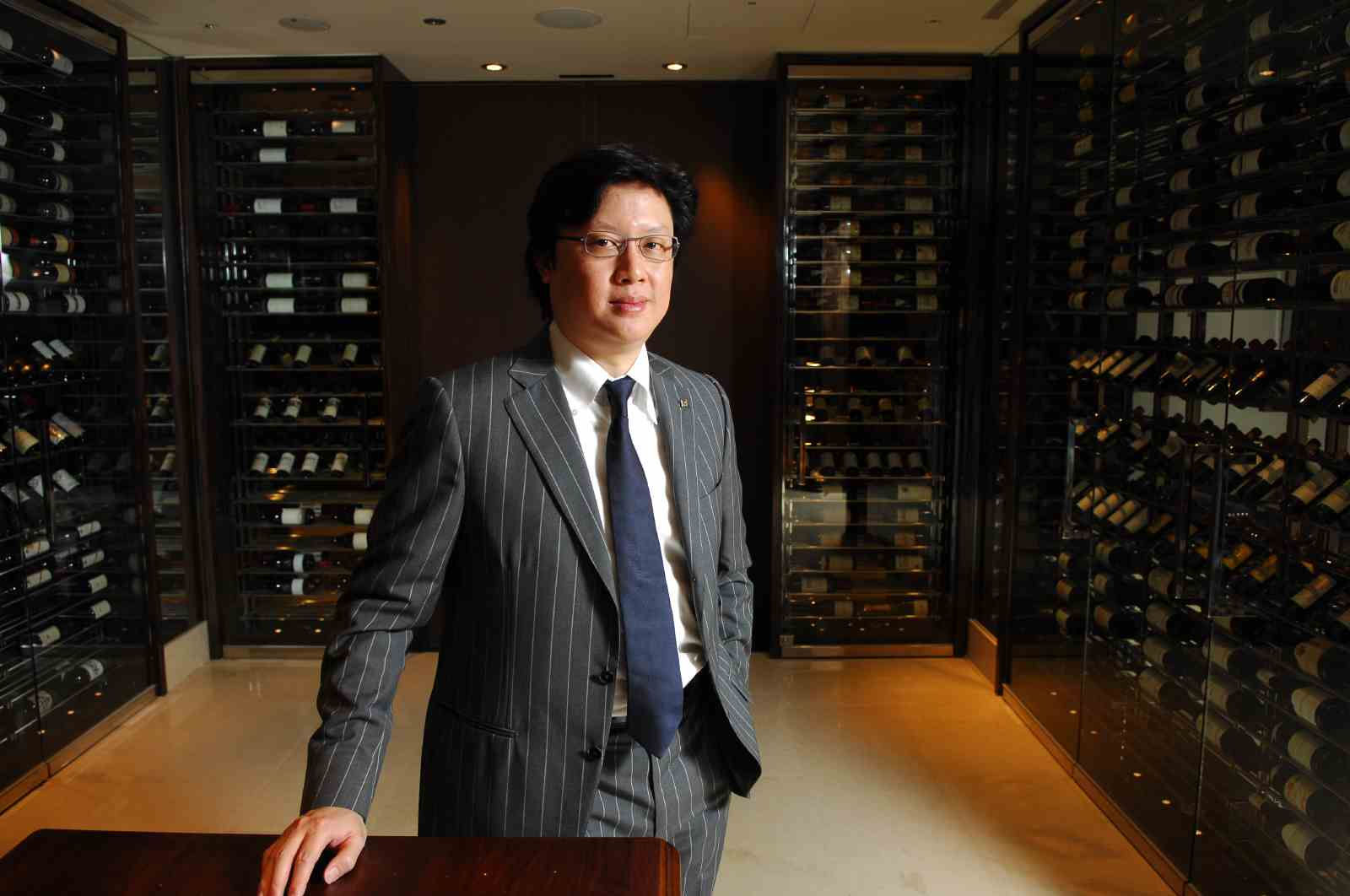 (Source: Kuo-Tai Liu)
(Source: Kuo-Tai Liu)
Lee is a gourmet and has a nose for promising culinary talent. Taiwan’s steak guru Danny Teng only became a celebrity chef after collaborating with Lee for the A Cut Steakhouse in the Ambassador Hotel in Taipei, which unleashed an island-wide craze for dry-aged beef.
Lee also really loves hamburgers. So when he heard that McDonald’s was looking for a buyer in Taiwan, he immediately put up capital in his own name and won Sinyi Realty Chairman Chou Chun-chi and Zhonghe Textiles Chairman Yeh Chi-chao as partners. After more than 400 days of review, the Fair Trade Commission finally approved Lee’s bid to buy the McDonald’s franchise and assets in March of 2017, much to the chagrin of a dozen competitors. For Lee, the deal meant that he would finally get a chance to shine on his own stage.
“Inside the Group, Hubert will always be the second-born; he can only come into his own if he steps out,” says a veteran employee of Shihlin Development.
Virtually overnight, Lee became a heavyweight to be reckoned with in Taiwan’s food and beverage industry, thanks to the popularity of McDonald’s and its influence on the food supply chain given 100 million customer visits per year.
Lee was planning to expand from the affordable fast food segment into higher-end offerings to appeal to the consumer of the future. His name card reveals his ambition to take fast food to a higher plane. Hospitality is written on the back; it is the name of the company Lee established to acquire McDonald’s Taiwan and refers to the gold standard for service in the hotel industry.
Experience of the Future: Aesthetics X Digital Transformation
Lee’s endeavor to add a hospitality industry touch to his fast food chain got a shot in the arm when the McDonald’s parent company launched its new tech-driven concept Experience of the Future globally in 2017.
“He has run much more upscale restaurants, so he has very high expectations toward the food ingredients,” remarks Lin Li-wen, vice president of supply chain management at McDonald’s Taiwan. She recalls Lee’s first visit to the company. His top concern wasn’t the procurement process or cost but how to control food safety.
Lee, who is an architecture enthusiast, has personally planned and designed the interior of the Yeangder Group’s headquarters building and the Ambassador Hotel in Hsinchu. To shed the stereotypical cheap fast-food image, Lee advocated adopting the parent company’s latest interior design, which uses an industrial style, and combining it with the geometrical shop design that is currently popular in Asia. He personally checked the design drawings for every single outlet before the remodeling started.
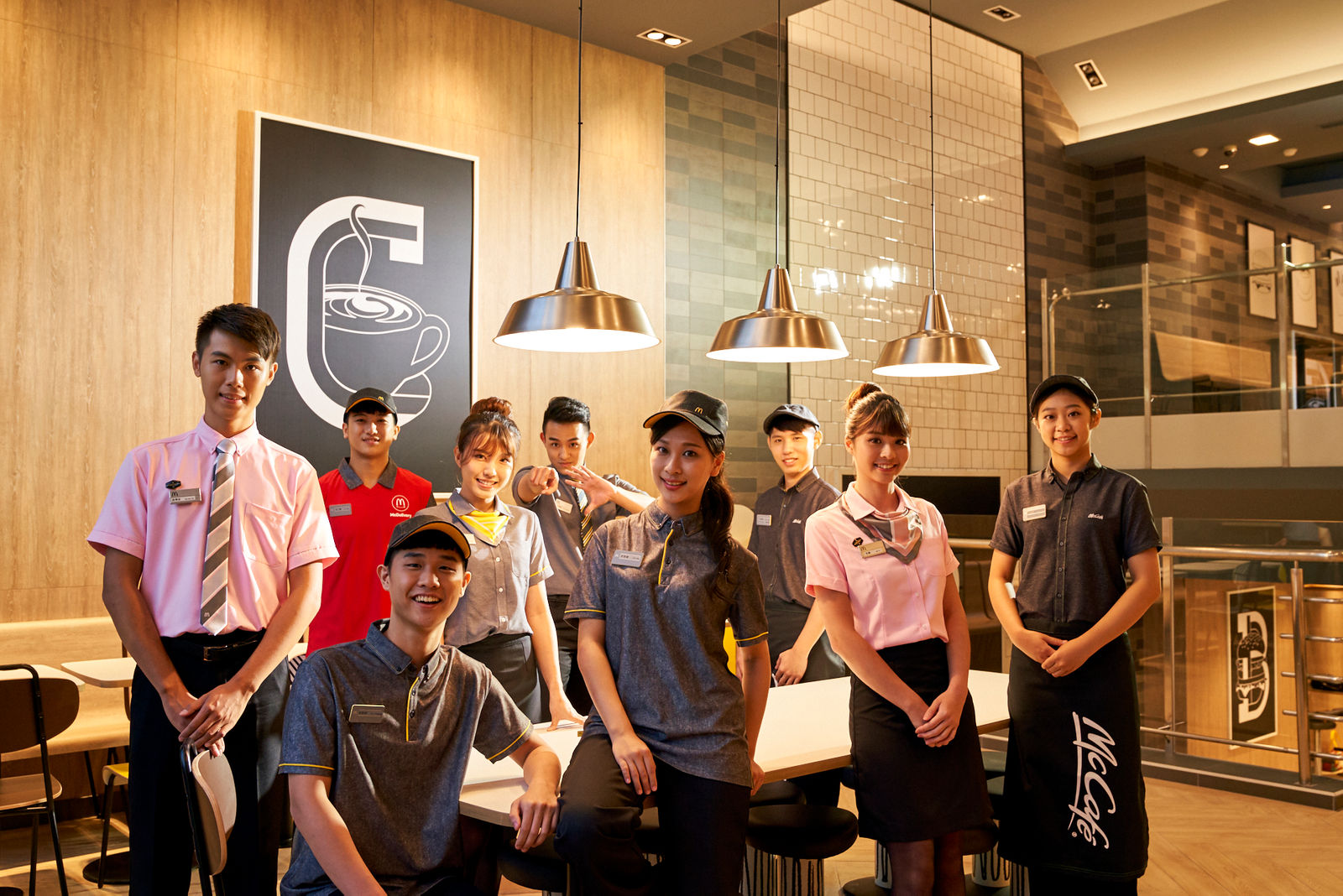 (Source: McDonalds)
(Source: McDonalds)
To underline the new hospitality spirit, Lee decided to update the eight-year-old employee uniforms. He hired Cambodia-born fashion designer Khieng Puong, who learned his trade in France and is renowned for his airline uniform designs, for the job.
Just five years ago, it was impossible to pay at McDonald’s with anything but cash. Lee, however, invested heavily in digital services. He launched a stored-value card for earning loyalty points that can be exchanged for food at the restaurants. Also introduced were credit card payments and payment with Taiwan’s four leading stored value cards (easy card, iPass, icash and Happy cash). Mobile apps were released and self-service kiosks were installed. Within just three years, the fast-food chain’s digital transformation was complete.
Due to his background in the hotel industry, Lee looked at all innovations from the customer perspective. Concerned that guests would shy away from the self-service kiosks, he decided to assign “hospitality ambassadors” to each outlet who help customers operate the terminals and bring meals to the table. Most importantly, they are trained to quickly detect what customers need and provide relevant assistance just like a hotel concierge. This not only speeds up the purchase process but also adds a warm personal touch.
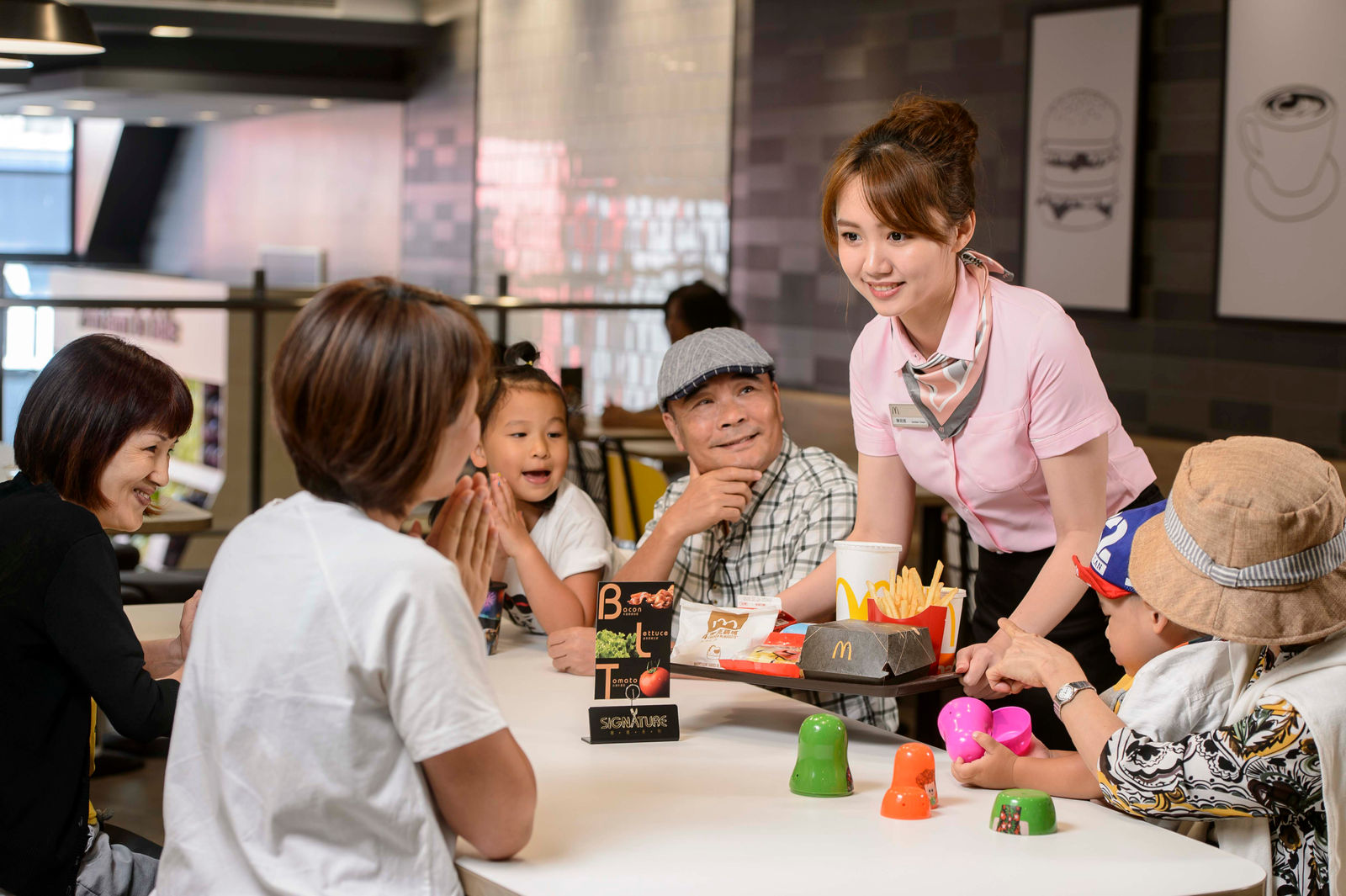 (Source: McDonalds)
(Source: McDonalds)
“In recent years, McDonald’s has definitely made many innovations and adjustments with regard to interior décor and service flow,” acknowledges Kao Shun-hsing, general manager of competing hamburger chain Mos Burger.
Aggressive Localization, Adding Taiwanese Flavors to American Fast Food
Upgrading does not necessarily mean going for high-end dining, but rather the integration of local elements. Lee is keenly aware that transnational brands need to be down to earth if they want to reach people on an emotional level. That’s why McDonald’s Taiwan began to increase its local procurement of food ingredients three years ago.
For fruit and vegetables, locally sourced produce already reaches a share of 50 percent to 60 percent. Pending certain technical breakthroughs, that share of locally grown food will only continue to increase.
Since taking over, Lee has worked to feature the soft power of Taiwan’s local culture. He enlisted the cooperation of Taiwanese printed fabric designer label inBloom for promotional bags with a French fry or hamburger pattern. London-based Taiwanese fashion designer Apu Jan designed the new packaging, and Taiwanese professional badminton player Tai Tzu-ying appeared in a new advertisement spot.
Thanks to the localization agenda, the company is able to react quickly to local market changes and the seasonal supply situation. Last summer, an avocado angus beef burger stuffed with freshly cut avocado cubes appeared on the menu for the first time. The seasonal item was the most expensive product ever ever sold at McDonald’s Taiwan.
To meet the strict requirements of the American parent company toward franchisees, Lee interned at McDonald’s Singapore to get hands-on experience. He rolled up his sleeves and went through every single type of work that is typically done at a McDonald’s outlet, starting with deep-frying French fries.
Armed with this practical experience, he doubted that it would make sense to cut the avocados for the special burger at every outlet. Ultimately he decided that it was better to prep the avocados in the central kitchen before delivery to the restaurants. More than a dozen meetings with suppliers in a one-year period were necessary to figure out a way to keep the avocado fresh and appetizing during transport and thereafter.
After the release of the avocado-themed items, sales of Signature series products doubled.
Still, some industry peers are skeptical about moving upmarket as a growth strategy.
Raising Average Customer Transaction Value to NT$140
An F&B industry executive points to Steven Pan, chairman of Regent Hotels and Resorts, who, after acquiring Domino’s Pizza’s stores in Taiwan and Beijing, attempted to move into a higher price segment with pizza creations by hotel chefs. Soon afterwards, Domino’s had to return to its previous prices. Therefore, the industry insider believes that the effect from the hot-selling premium items on the McDonald’s menu will be short-lived.
Yet the signature series hamburger, which was put on the McDonald’s menu as a temporary seasonal item in 2017, was included in the permanent menu after half a year. In the two years since, one out of ten customers have been ordering this pricey item, pushing the average customer transaction value to NT$140 from NT$120 five years ago.
Informed sources say that the signature series products account for 10 percent of revenue, thus helping to make up shortfalls from the sluggish home delivery business.
At the end of 2019, Lee set the revenue growth target for the coming three years at an ambitious 6-8 percent. This means that in three years, 20 more restaurants must break the NT$100 million revenue mark.
Can the signature series products and the Experience of the Future concept restaurants support the chain’s growth in the next three years for a successful upgrading? The food and beverage industry peers and millions of McDonald’s customers are watching closely.
Have you read?
♦Taiwan’s New-Generation Food Revolution
♦ 7-Eleven's Elderly Interns
♦ Shin Yeh vs. Michelin-star Restaurant Mume: The Restaurant Sector Must Restart from Scratch
Translated by Susanne Ganz
Edited by TC Lin
Uploaded by Penny Chiang






